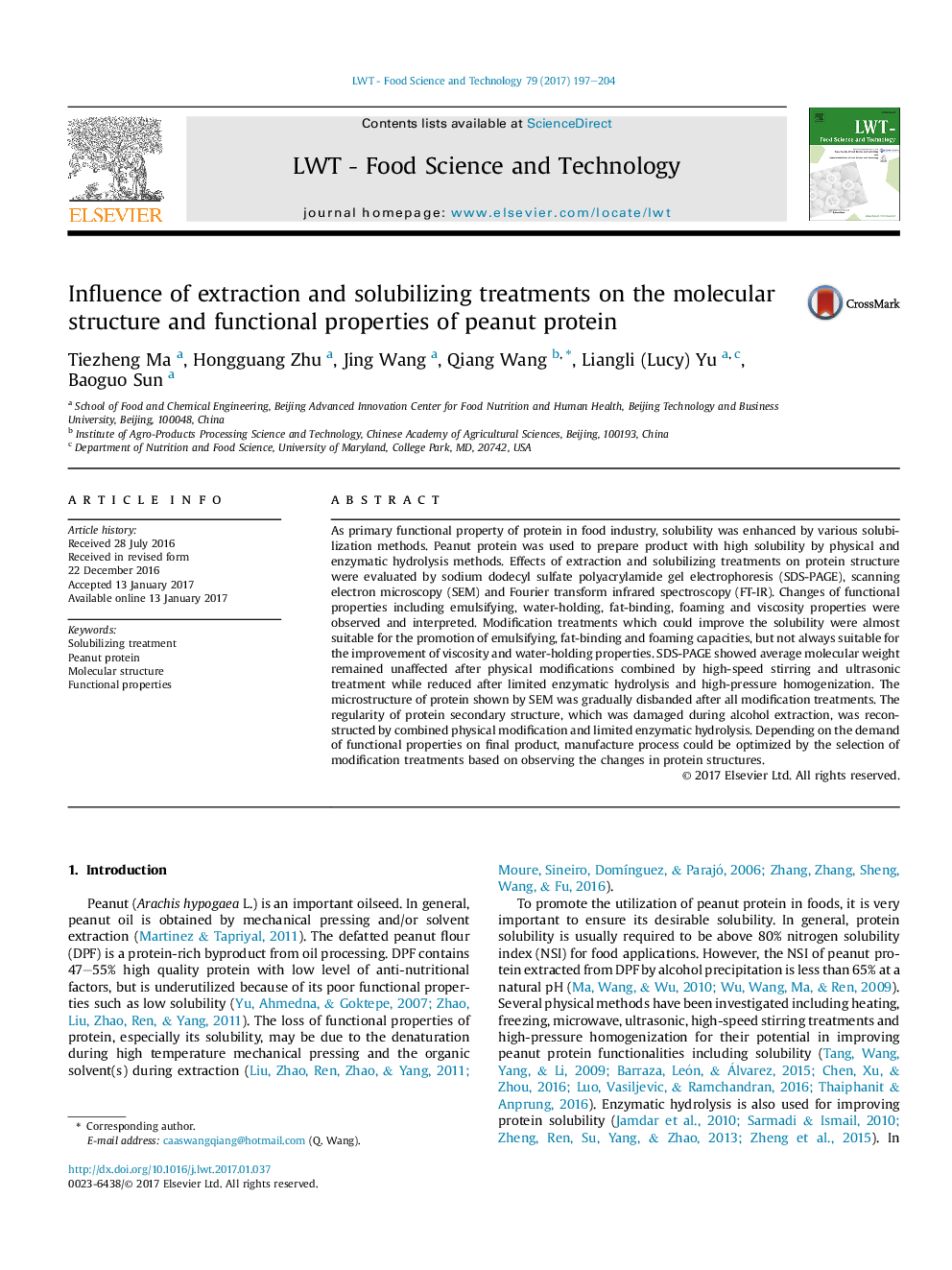| کد مقاله | کد نشریه | سال انتشار | مقاله انگلیسی | نسخه تمام متن |
|---|---|---|---|---|
| 5768762 | 1628519 | 2017 | 8 صفحه PDF | دانلود رایگان |
- Solubility lost during extraction was improved by physical and enzymatic methods.
- Promotion of solubility was due to various effects caused by different treatments.
- Functional properties were evaluated based on monitoring structural changes.
- The present work may enhance the application of peanut protein as food ingredients.
As primary functional property of protein in food industry, solubility was enhanced by various solubilization methods. Peanut protein was used to prepare product with high solubility by physical and enzymatic hydrolysis methods. Effects of extraction and solubilizing treatments on protein structure were evaluated by sodium dodecyl sulfate polyacrylamide gel electrophoresis (SDS-PAGE), scanning electron microscopy (SEM) and Fourier transform infrared spectroscopy (FT-IR). Changes of functional properties including emulsifying, water-holding, fat-binding, foaming and viscosity properties were observed and interpreted. Modification treatments which could improve the solubility were almost suitable for the promotion of emulsifying, fat-binding and foaming capacities, but not always suitable for the improvement of viscosity and water-holding properties. SDS-PAGE showed average molecular weight remained unaffected after physical modifications combined by high-speed stirring and ultrasonic treatment while reduced after limited enzymatic hydrolysis and high-pressure homogenization. The microstructure of protein shown by SEM was gradually disbanded after all modification treatments. The regularity of protein secondary structure, which was damaged during alcohol extraction, was reconstructed by combined physical modification and limited enzymatic hydrolysis. Depending on the demand of functional properties on final product, manufacture process could be optimized by the selection of modification treatments based on observing the changes in protein structures.
Journal: LWT - Food Science and Technology - Volume 79, June 2017, Pages 197-204
